- Menu
- JacketsMotorcycle Jackets
- HelmetsMotorcycle Helmets
- GlovesMotorcycle GlovesOther Categories
- BootsMotorcycle BootsOther Categories
- PantsMotorcycle PantsOther Categories
- JeansAll Motorcycle JeansOther Categories
- AccessoriesAccessoriesAccessoriesMotorcycle Luggage
- Ladies GearLadies Motorcycle Clothing
- Brands
- Sale
- Editorial
- Videos
- Sign In
- Register

Motorcycling 2010 on
Motorcycling as a lifestyle
In the last 100 years or so, motorcycling has come a long way. Although the manufacturers will always strive to improve their machines in an attempt to create a competitive edge, there is a limit how much further the motorcycle can be developed as far as a means of road transport is concerned. Already, motorcycles can accelerate faster, brake harder and corner more quickly than is appropriate on a public road. By the same token, nearly all modern bikes are way beyond the ability of the average road rider to exploit them.
Technology, of course, will continue to make bikes safer, providing more protection for the rider. They will also become easier to ride. But no longer will we see the great advances in performance that we've experienced pretty consistently during the last century.
In a society that is more diverse than it has ever been, in the future most motorcyclists will choose what they want to ride based on lifestyle considerations.
Yes, there will be riders who still ride a bike because it is the cheapest, fastest or most convenient way to travel from A to B but, by and large, the motorcycle will no longer be seen primarily as a means of transport.
It was perhaps Harley Davidson who first realised the potential of associating their bikes with a lifestyle. With a product that lacked a certain degree of sophistication and modernity, the company had to look at alternative ways to market their bikes. It's a philosophy that is as relevant to the company today as it was in the seventies and eighties.
As motorcyclists we like to think of ourselves as individualists, and it is undoubtedly true that the motorcycle gives us greater scope for the personal expression than is possible for the average driver of a modern car.
But in a world where fashions and trends travel around the world at lightning speed, there is little scope for true originality and individuality. The reality is that most of us fall into some type of motorcycle category; we tend to conform to some form of trend or style.
That is to say that motorcycling has developed a number of tribes into which nearly all of us fall to a greater or lesser degree.
Let us look at some of these groups.
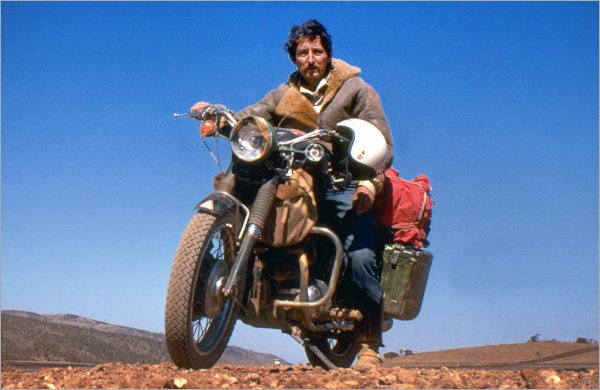
Motorcycling has always offered a means to explore the world. The earliest record of someone circumnavigating the globe on a bike was Carl Stearns Clancy in 1912. In the 1970s, Ted Simons inspired the baby-boomer generation to get on their bikes and just go. More recently, Ewan McGregor's travel documentaries helped to firmly establish the popularity of what has become known as adventure bikes.
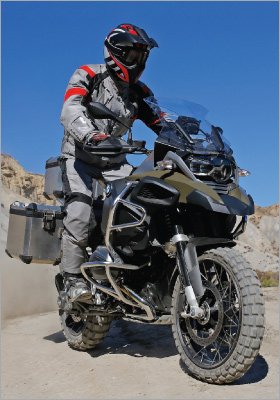
These riders we might term Globe Trotters, accepting of course that, though there is a common aspiration, many riders of touring and adventure machines rarely make it beyond their favourite Sunday morning biker haunt.
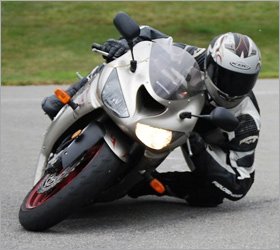
This is a tribe we might term Boy Racers.
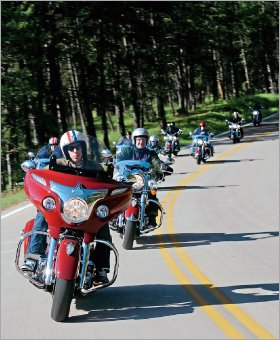
We might term this tribe the Highway Cruisers.
The problem with the modern motorcycle, like the modern motorcar, is that they are, to a great degree, beyond the scope of the average home mechanic. By and large, motorcycles made after the end of the seventies are quite sophisticated pieces of mechanical engineering. No longer can one be repaired with a screwdriver, a set of spanners and a hammer.
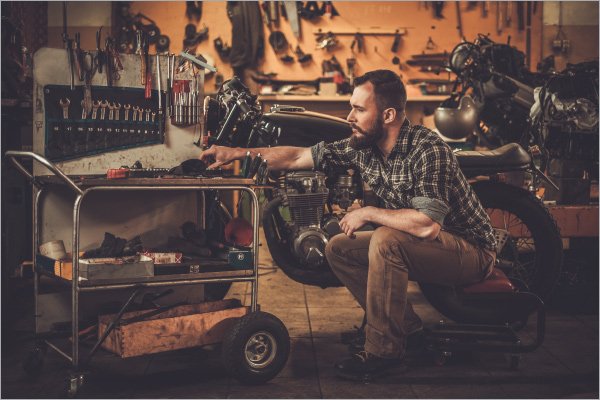
But there are motorcyclists for whom the joy of motorcycling is the mechanical challenge. For these riders the bike is an adult sized Meccano set, something to be taken apart and put together again. Whereas for some the ideal summer's evening might involve meeting up with biking friends for a ride to a local pub, for this particular tribe there is nothing to beat the prospect of some quality time in the shed, where a recalcitrant gudgeon pin awaits its inevitable fate. Such individuals might understandably be drawn to older, classic bikes, but they might equally be interested in customising or upgrading something more modern: fitting a new exhaust, upgrading the ECU, or adding extra lights to the bike.
These motorcyclists we might refer to as Garagistes.
Riding a motorcycle can be a great joy. Those who do not ride often assume that the greatest appeal is the excitement that come from indulging in such a potentially dangerous activity. And it cannot be denied that a motorcycle does have the capacity to cause our bodies to run with adrenalin, but riding a bike can have a much more Zen like quality to it.
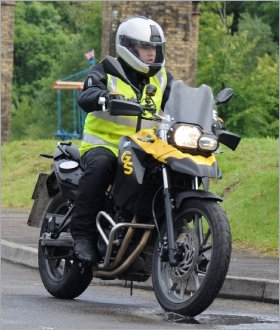
Without wishing to imply anything derogatory about such motorcyclists, we might call them Captain Sensibles.
There are many motorcyclists for whom the heyday of motorcycling was the late fifties and early sixties. This was, it has to be acknowledged, a romantic period. Today it plays out like an old and rather gritty black and white movie, a movie wit a vibrant rock 'n' roll soundtrack. This was an era that saw the birth of the 'teenager', and for many kids of the time the motorbike provided not just a way to get their kicks, but also to express their sense of identity and frustration with the old order.
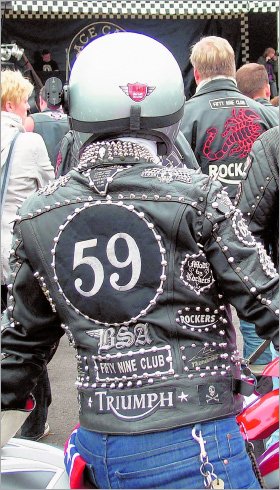
Today, the appeal of this era is at an all time high. We live in a time that seems obsessed with its relatively recent history, and for many a biker there is huge nostalgia attached to the cafe racer and the guys who rode them, as is demonstrated by the immense popularity of West London's Ace Cafe. Even the most respected of motorcycle manufacturers now have a model in their range that features the clip-on handlebars, rear set foot controls, and the single seat that were typical of the time.
The motorcyclists who find that their choice of motorcycle, and style of attire are heavily influenced by this era, we might term Ace Boys.
A more recent phenomenon in the motorcycle world is the modern urban biker. Adopting a style that is Recognised worldwide, these bikers draw their influences from a number of sources, yet there is a strong theme hat runs through their approach.
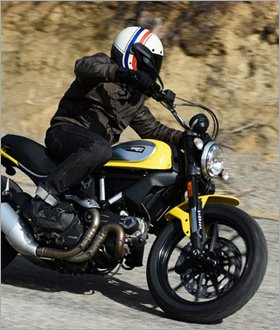
Given that this is a tribe that is driven by considerations of style, what the modern urban biker wears is almost as important as what he rides. Quality and authenticity are of paramount importance. Some brands are cool and thus acceptable, others are deemed less worthy. As ever, those in the know know! The rest of us do our best to keep up. Ironically, of course, given the strong sense of individual style that the modern urban biker would profess to possess, there is loosely a uniform that identifies these riders. The jacket is leather or waxed cotton, but never Cordura. The helmet is open-face, or retro styled. The gloves are short, as are the boots. Below the waist is a pair of denim jeans. And nowhere to be seen is evidence of armour or the kind of protection that most out of town riders have come to expect and value.
We are going to term these riders the Style Warriors.
Not every biker will fall into one of the categories or groupings we have identified. For some the love of all things two wheeled is so great, and so all consuming, that they are virtually incapable of being categorised. We are talking about people for whom motorcycling is more a way of life than a hobby or a pastime. Their fascination with motorcycles cannot be confined to just one type of motorcycle, or one style of riding. They will typically own a number of motorcycles. A track day bike for the circuit. An off-road bike for green-laning. Perhaps something of a more classic nature for trips down memory lane; a bike they could perhaps tinker with in the shed. So central is the bike to the lives of these enthusiasts that when there is time for a holiday, there can be nothing more alluring than seeing new places from the vantage point or a motorcycle saddle. Such individuals, we might conjecture, are going to take pride in developing their riding skills in every discipline they can. Quite simply, there are bikers out there who can deftly transfer between all the tribes we have identified.
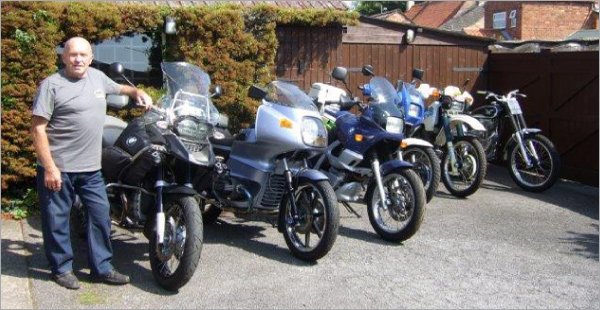
We can think of no better or affectionate way of describing such enthusiasts than to term them Bike Nuts! There are many, many more biking tribes out there than we have identified here. Those whose main interest is to ride off-road, those who partake in classic trials, those whose principal fascination is classic bikes, or vintage bikes.
And in the future more tribes will emerge. The motorcycle has become an expression of the type of person we are, and the style of life we aspire to, or want to be part of. To give new meaning to Lance Armstrong's famous statement: “it is not about the bike”. Rather, the bike has become an extension of our lifestyle. All we have to do is select a tribe!
The future of motorcycling
In the past hundred years, motorcycling has gone from a toy of the wealthy to a cheap mode of transport for the masses. It has spawned countless subcultures and continues to impact society today.
We could write a book on where motorcycles could go in the future, but we'd rather hear what you think - where do you see or hope motorcycling will go in the future?
Comment below to let us know your thoughts.
Images courtesy of www.mortonsmediagroup.com



















































